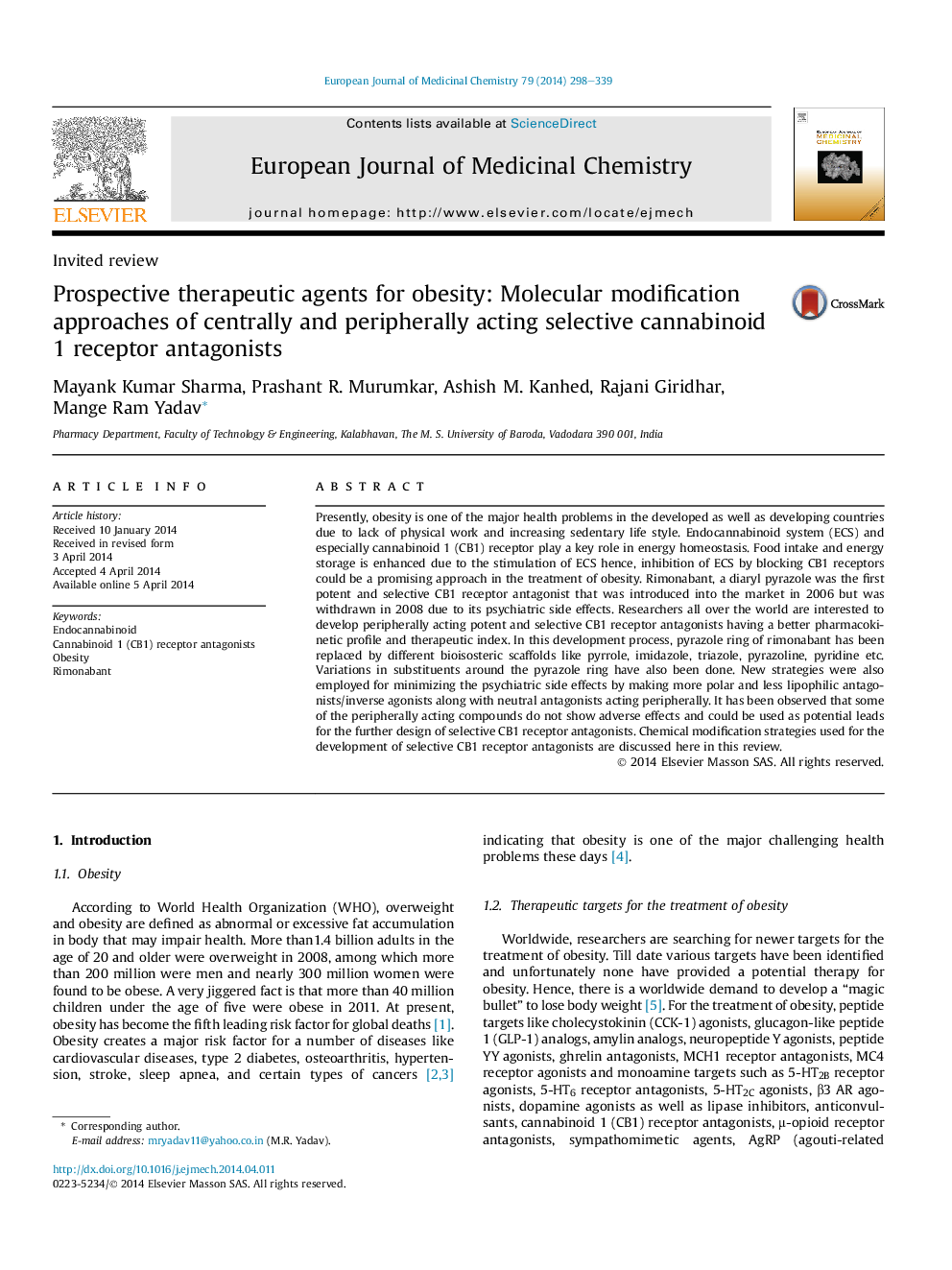| کد مقاله | کد نشریه | سال انتشار | مقاله انگلیسی | نسخه تمام متن |
|---|---|---|---|---|
| 1397297 | 1501137 | 2014 | 42 صفحه PDF | دانلود رایگان |
• Role of CB1 receptor in obesity is discussed.
• Centrally and peripherally acting CB1 receptor antagonists are reviewed.
• There is need to design peripherally acting selective CB1 receptor antagonists.
• Molecular modelling studies are also incorporated.
• Development strategies of selective CB1 receptor antagonists are discussed.
Presently, obesity is one of the major health problems in the developed as well as developing countries due to lack of physical work and increasing sedentary life style. Endocannabinoid system (ECS) and especially cannabinoid 1 (CB1) receptor play a key role in energy homeostasis. Food intake and energy storage is enhanced due to the stimulation of ECS hence, inhibition of ECS by blocking CB1 receptors could be a promising approach in the treatment of obesity. Rimonabant, a diaryl pyrazole was the first potent and selective CB1 receptor antagonist that was introduced into the market in 2006 but was withdrawn in 2008 due to its psychiatric side effects. Researchers all over the world are interested to develop peripherally acting potent and selective CB1 receptor antagonists having a better pharmacokinetic profile and therapeutic index. In this development process, pyrazole ring of rimonabant has been replaced by different bioisosteric scaffolds like pyrrole, imidazole, triazole, pyrazoline, pyridine etc. Variations in substituents around the pyrazole ring have also been done. New strategies were also employed for minimizing the psychiatric side effects by making more polar and less lipophilic antagonists/inverse agonists along with neutral antagonists acting peripherally. It has been observed that some of the peripherally acting compounds do not show adverse effects and could be used as potential leads for the further design of selective CB1 receptor antagonists. Chemical modification strategies used for the development of selective CB1 receptor antagonists are discussed here in this review.
Diaryl as well as non-diaryl heterocyclic rings substituted at different positions have been designed and evaluated as centrally and peripherally active CB1 receptor antagonist as potential therapeutic agents for the control of obesity.Figure optionsDownload as PowerPoint slide
Journal: European Journal of Medicinal Chemistry - Volume 79, 22 May 2014, Pages 298–339
